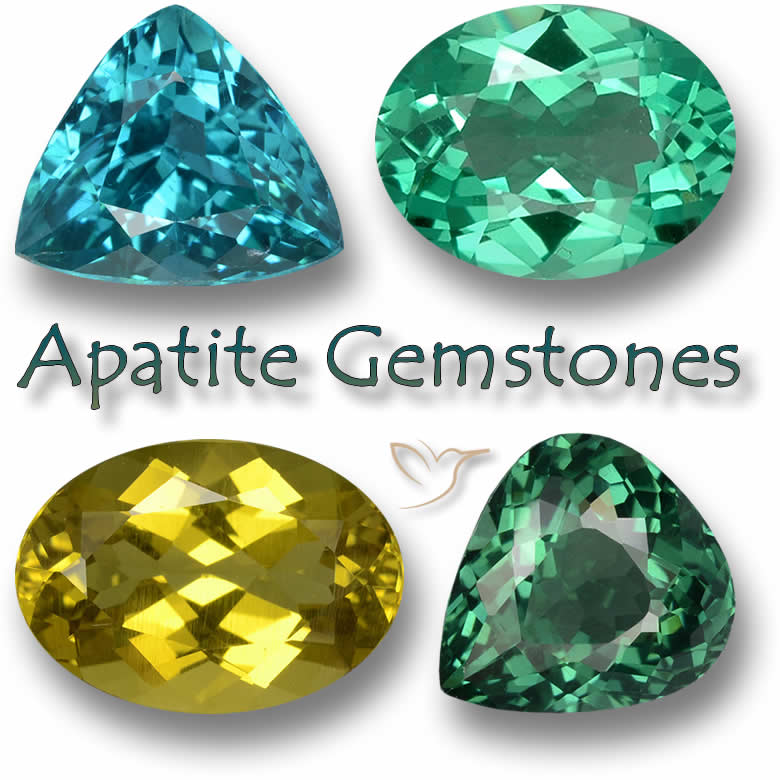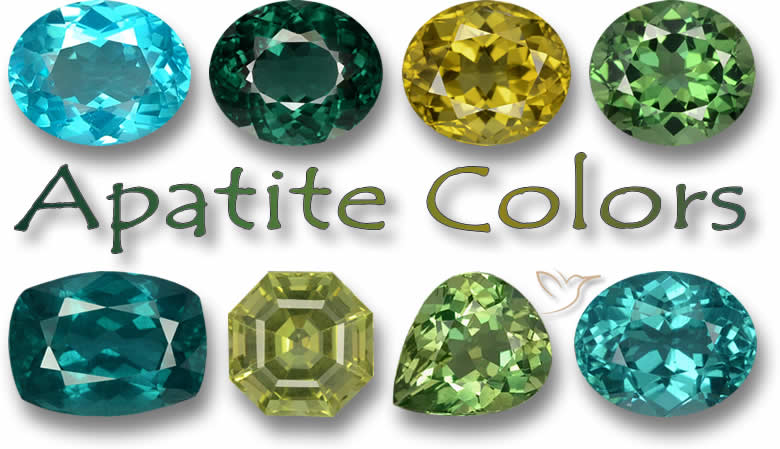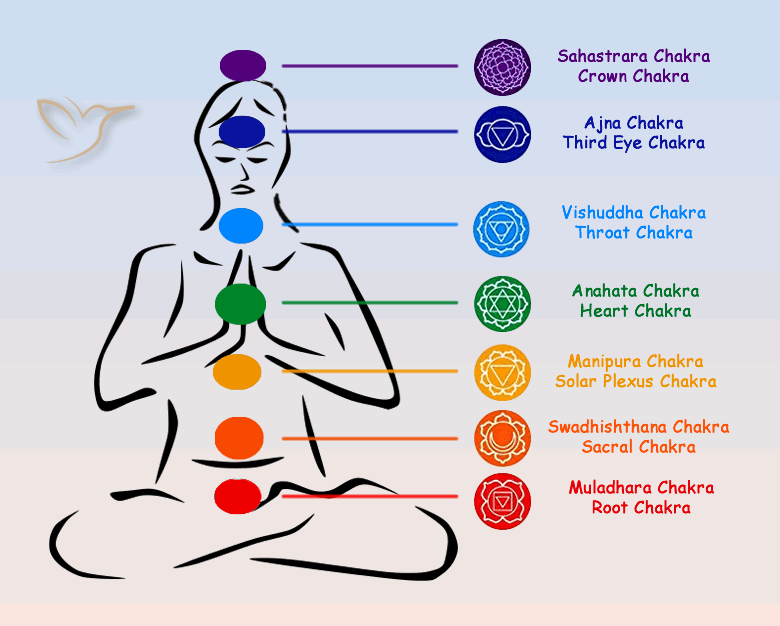What can I find in this article?
- Apatite Colors
- Apatite Species
- Apatite Clarity
- Spiritual Meaning of Apatite
- Apatite and the Chakras
- Health Benefits of Apatite
- Apatite Price
- Apatite Discovery
- Where is Apatite found?
- How is Apatite formed?
- Can Apatite be treated?
- What jewelry is Apatite suitable for?
- Did you know? Interesting facts about Apatite
- How to care for Apatite
- How to tell a real Apatite?
- Can Apatite change color?
- What is so special about Apatite?
- Apatite - Gemological Properties
Apatite Gemstone Information

Introduction
There is a story told of a little boy digging in the sand near an old gold mine in Southern Madagascar unearthing a bright blue gemstone the color of a swimming pool. There was much excitement as early signs suggested this could be a new source of the Paraiba Blue Tourmaline usually found in Brazil. As it was the gemstones turned out to be Apatite which up to that point was of more interest to collectors than jewelers.
These blue apatites were described as neon or electric and were very close in color to the Paraiba Tourmalines from Brazil which can reach almost astronomical prices due to their stunning beauty and rarity. These newly discovered Apatites matched the color but at a fraction of the price and suddenly the gems world took notice.
This gemstone is only rated at a 5 on Mohs hardness scale which is one reason it is not a great deal more popular but it is not a fragile gemstone and with the proper settings it can make stunning jewelry pieces. Perhaps not best as a ring or a bracelet (although imaginative jewelers can work wonders) it makes eye-catching pendants, necklaces and earrings.
Read our detailed article on the Mohs hardness scale here

The neon blues may be the most famous of the apatites but this gemstone comes in a whole range of colors, green, brown, softer or darker blues, yellow, violet and even colorless.
As we have mentioned the neon blue version is the most sought after and so is usually the most expensive although there are some exquisite rich purple examples mined in Maine in North-East America which are also very valuable.
Apatite is the name given to a group of similar minerals which are hard to tell apart and have very long difficult to pronounce names so everyone apart from scientists just calls them Apatites! When you hear one example, "hydroxylapatite", you will understand why. Just try ordering one of those over the phone!
Apatite gemstones are not especially common but the mineral family it belongs to is very common. For centuries the phosphate material which produces apatite has been used as a fertilizer and the mineral itself is the same material which forms the bones and teeth in our bodies.

Gemstone-quality specimens, commonly referred to as fluorapatite, are primarily distinguished by their color, such as green apatite or yellow apatite. The more uncommon variations may be referred to as neon-blue apatites, resembling Paraiba Tourmalines, or as Asparagus Stone when displaying a distinct green hue.

Certain gemstones have flaws or inclusions inside which cause it to reflect light in such a way as to look like the eye of a cat. This can occur in apatites which creates a rare and beautiful gemstone called cat's eye apatite.


Most apatite gemstones that are deemed good enough to be used in the jewelry trade are what we call 'eye-clean'. That means there are no flaws or blemishes that can be seen inside the gemstone by the naked eye just looking at the specimen from about 6 inches (15 cm). Certain examples that are more translucent or display the cat's eye phenomenon can be cut into cabochons or dome shapes for use in jewelry.
Apatite, known as the gemstone of manifestation, possesses the ability to enhance clarity and perception. It aids in identifying the obstacles hindering progress towards goals and brings awareness to the issues that impede personal growth.
By understanding what truly matters in life, apatite instills self-confidence, empowering individuals to make necessary changes to achieve their desires. This gemstone serves as a catalyst for motivation and dispels negativity and pessimism.
Apatite's chemical composition primarily consists of phosphate, the same material found in the teeth, bones, horns, tusks, antlers, and hooves of various animals, including humans. This connection with animal conservation further strengthens its significance.

Chakras are the energy centers in your body also referred to as Qi or Prana. There are seven Chakras throughout the body each influencing a particular physical, emotional or mental state.
The seven chakras are as follows, Crown, Third Eye, Throat, Heart, Solar Plexus, Sacral and Root. The word Chakra is a Sanskrit word meaning wheel. Each chakra is assigned a color of influence and a gemstone which has a particularly dominant color will be connected with that color's chakra point.
Sometimes in life our Chakras become unbalanced or blocked and need to be realigned or cleansed. One way to do this is through the use of Chakra healing stones. These stones or crystals are colored to correspond to individual chakras, red for the Root Chakra, orange for the Sacral, yellow for the Solar Plexus, green for the Heart, blue for the Throat, Indigo for the Third Eye and purple for the Crown Chakra.
Apatite gemstones can come in almost any color to match individual Chakra points.
Without going into too much detail, here are some facts on the different Chakras:
- Crown Chakra
- Crown Chakra is your connection to the divine or your spiritual guide and is located at the top of your head
- Third Eye Chakra
- The Third Eye Chakra is your intuition or aspirations and is on your forehead between your eyes.
- Throat Chakra
- The Throat Chakra which deals with our ability to communicate and no prizes for knowing where that one is.
- Heart Chakra
- The Heart Chakra, concerned as you might imagine with matters of love and happiness, this one is found in the center of your chest above your heart.
- Solar Plexus Chakra
- The Solar Plexus Chakra is placed at the upper abdomen area and is associated with confidence and self control.
- Sacral Chakra
- The Sacral Chakra has to do with sexuality and pleasure is just below the belly button or navel.
- Root Chakra
- Root Chakra deals with career, money and attachment and is located at the base of our spine.
Blue apatite is most compatible with the throat Chakra meaning on a physical level it can aid in all medical issues concerning the throat and neck and on a metaphysical level blue apatite will help with communication and give you nice lift if you have to give a speech or make a presentation. Yellow apatite affects the solar plexus chakra and deals with relationships and energy. Green apatite is associated with the heart chakra which is the entrance to all forms of healing.
Not surprisingly given its chemical properties, Apatite is especially beneficial in all matters to do with bones and teeth, initially helping to form healthy teeth and bone structure through the absorption of calcium then in combating arthritis, swelling of the joints, osteoporosis and even rickets.
It also helps with the digestive system, central organs such as spleen, pancreas, liver and gall bladder and can speed up the metabolic rate and suppress hunger pangs. As a whole body service, apatite will help fight viruses.
We are often asked how to use gemstones for spiritual or health benefits and while we are certainly not experts in this field we have gained some experience and knowledge. Of course wearing the gemstone as a piece of jewelry is the easiest way for the crystal to influence your body. Certain colors have connection to different parts of the body, for example green apatite is associated with the heart chakra so a pendant could be ideal while blue apatite is connected to the throat chakra so a necklace would be just right.
Alternatively they can be placed in your purse or pocket and used as a touchstone throughout the day. Hold crystals or place them in your lap while meditating. Easiest of all, just lay down with crystals on your body, lined up with the chakra points if possible. Put them in the bath (check the particular stone is impervious to water). Decorate your home with crystals and certain crystals boost the working environment so keep them on your desk, others help you relax so keep them in the lounge or living room.
Apatite is thought to help with prophetic visualizations so placing a gemstone under your pillow before going to bed will boost your chances of a telling dream.
To cleanse apatite gemstones, hold it under running water, a spring or stream is ideal but a tap will suffice, while picturing the inhibitions flushing away. Then allow the apatite to dry in the sun for a half an hour or so.
Disclaimer: Metaphysical and Alternative Crystal Healing Powers and Properties are not to be taken as confirmed advice. Traditional, Ceremonial and Mythological Gemstone Lore is collected from various resources and does not represent the sole opinion of SETT Co., Ltd. This information is not to replace the advice of your doctor. Should you have any medical conditions, please see a licensed medical practitioner. GemSelect does not guarantee any claims or statements of healing or astrological birthstone powers and cannot be held liable under any circumstances.

Apatite Price List |
||
Color |
Weight range |
Price range / USD |
|---|---|---|
Blue |
up to 1ct |
$10 - 30/ct |
Blue |
1ct + |
$15 - 150/ct |
Paraiba Blue |
up to 1ct |
$15 - 40/ct |
Paraiba Blue |
1ct + |
$25 - 180/ct |
Green |
up to 1ct |
$5 - 15/ct |
Green |
1ct + |
$5 - 100/ct |
Yellow / Golden |
up to 1ct |
$10 - 20/ct |
Yellow / Golden |
1ct + |
15 - 80/ct |
Cat's Eye |
1ct + |
$5 - 50/ct |
The price of colored gemstones is evaluated almost always on the hue, the tone and the saturation of their color, and apatite is no different. The Apatite gemstones described as neon blue, electric blue or swimming pool blue resemble the Paraiba Blue Tourmalines and are the most expensive. Although they nearly match the color and dazzle of the illustrious Brazilian gemstone, they are just a fraction of the price.
Green and yellow apatite are lovely gemstones and come in some very large carat sizes in all manner of facets which have all the attributes of gemstones that command much higher prices. Purple, lavender or lilac apatite, most often mined in Maine in the USA, are another highly valued specimen of this gemstone. Asparagus Stone, another green apatite with a slight yellowish tinge can be priced a little higher than the usual green or yellow gemstones.
The next thing to consider is clarity. With faceted gemstones, a nice clear gemstone with no blemishes or visible inclusions is better than a cloudy or translucent one.
The size of the gemstone is always important and in most instances we can say the bigger the better! The neon or electric blue apatite gemstones are rarely over 1 carat so any particularly large carat sizes would be very much sought after.
Last of all is the cut, how the rough gemstone is carved and shaped to show off its best qualities can make or break the price. Apatite is quite soft for a gemstone so can be a challenge to cut, carve and shape.
Apatite is an interesting gemstone with an unusual mineral make-up. Apatite is actually a wide group of different but similar minerals found all over the world usually composed of calcium phosphate (the material that makes our teeth and bones) plus fluorine, chlorine or hydroxyl. This varied composition is what gives the apatite gemstones their different coloring.
Apatite was not used extensively in the ancient world with only a few beads and amulets discovered over the years from archaeological digs in the Middle-East and in Africa but its modern history began in 1786 when it was studied and named by German geologist, Gottlob Werner.
The gemstone has often been mistaken for peridot, tourmaline and aquamarine and even determining which mineral is which in the apatite family itself has proven difficult so Mr. Werner called it Apatite from the Greek Apatao, meaning to deceive. Even the initial classification was wrong and what Gottlob designated Apatite was re-classified as Fluorapatite a number of years later.

Mineral apatite is found all over the world but apatite deserving of being cut into gemstones is a bit more difficult to find. The neon blues that have caused the rise in popularity of this gemstone because of their likeness in color to Paraiba Tourmalines were found in Madagascar but this source may be running out.
Luckily it appears that similar neon blue apatite is also found in Brazil. Mexico is a source of some beautiful yellow apatite specimens (some up to 20 carats in size) and Spain provides most of the Asparagus Stone green apatite samples. Maine in the USA supplies the bulk of all the purple to lilac apatite to be found while the green form can be found in Canada as well as other sources.
Brazil, Canada, India, Madagascar and Mexico are the world's top producers. There is also a cat's eye apatite from Kenya and Tanzania, in east Africa, which comes in large sizes, but is also pretty rare.

Apatite is unusual in that the minerals that make up this gemstone were from organic debris such as bones, teeth and scales which have built up and mineralized by heat and pressure. This is why apatite is often found on sites where ancient lakes or seas were found.
Apatite is formed in pegmatites in all types of rock; igneous, metamorphic and sedimentary, when magma or lava cool, creating cracks and fissures where liquids and the mineralized organic debris collect and crystallize over millions of years.
Typically apatite gemstones are not treated in any way other than the usual cutting and polishing however the neon blue version which looks very much like the Paraiba Tourmalines are likely to have had some heat treatment. Apatite is not a very tough gemstone so has to be heated quite carefully to avoid fracture due to sudden temperature changes.
At GemSelect we will inform you of any treatments our gemstones have received.
Apatite is a wonderful looking stone and comes in great colors but its only let down is its relative softness on the Mohs Hardness scale at just 5. This is no real problem for earrings, necklaces and pendants but can be a problem for bracelets and rings which can take a few more knocks when worn. Imaginative protective settings as well as recessed designs and even doublets and triplets have been used by jewelry designers around the world in order to work with this delightful gemstone.
- Astronauts collected rocks from the Moon and discovered that they contained apatite.
- Apatite preserves dinosaur bones.
- Although dinosaurs died out around 65 million years ago we still occasionally discover their fossilized bones, the reason for this is that they contain apatite which helps preserve them.
- Apatite is composed primarily of calcium and phosphate and is the most abundant mineral in your body.
- Salt crystals come from Apatite.
- Salt is vital for our survival although my doctor tells me not to add too much to my French fries. The chlorine in the salt you use probably began its life as apatite.
- Apatite is used to make plasma TV screens.
- A 500 carat purple apatite called 'the Roebling' was discovered in north-eastern USA.
- It was mined in the Pulsifer quarry on Mt Apatite in Maine, where the world's finest purple apatite gemstones are said to come from.
- Scientists are looking into using apatite phosphates to store nuclear waste material.
- They glow in the dark.
- Some apatite specimens seem to glow or emit light in certain circumstances a phenomenon known as fluorescence or luminescence.
There is no doubt that Apatite is quite soft for a gemstone so extra care is needed when wearing, cleaning and storing. Apatite jewelry should be removed when doing any physical activities, especially household cleaning, sports or gardening. Apatite is sensitive to acids and high heat, so just clean the gemstones in warm soapy water. Store them separately from other gemstones, wrapped in soft cloth or placed in fabric lined boxes.

Obviously a certified gemstone from a reputable dealer is the best approach but this is not always possible when you are out searching for a great gemstone or a bargain!
When you discover that Apatite got its name from the Greek word Apatao meaning to deceive, trick or cheat you may guess that identifying apatite gemstones may be a little difficult, especially 'in the field'. In the laboratory we can check the refractive indices, the dispersion, pleochroism and absorption spectra to truly determine an apatite but you may have left your refractometer at home!
Apatite has been confused with Beryl, Tourmaline and Quartz and to distinguish it from them a simple hardness test would suffice - all these are much harder at around 7 on the Mohs hardness scale.
The common scratch test is an easy way to check many gemstones but apatite is right in the middle of the Mohs hardness scale and can be scratched by anything harder than a kitchen knife. Even a piece of glass can be harder so this does not narrow down identification by very much.
A faceted apatite has what we call a vitreous luster or shine, which means it has a glassy surface so this is not very much help either as glass can be used as a synthetic gemstone.
Apatite fluoresce under short and long ultraviolet light so if you are looking at one in a gem store or trade fair where this type of lighting is available this is one way to check. Of course other gemstones also display fluorescence.
Apatite may be beautiful but it is not a very expensive gemstone so it is not very likely that sellers will spend much time and effort in trying to deceive people into buying fake apatite gemstones.
Except for some extraordinary large specimens with spectacular coloring it is usually not worth going to the expense of getting professional appraisals - once again I would simply recommend purchasing this lovely gemstone from a trusted dealer.
At GemSelect, we currently offer brief identification reports from your choice of three well-respected independent gemological laboratories, American International GemLab (AIG), International Colored Gemstone Association Laboratory (ICA GemLab) and Burapha Gemological Laboratory (BGL Lab).

Some gemstones show a distinct or dramatic change in color under different light sources. Look at a garnet under electric or artificial light and it could look red, take it outside into the sunlight and all of a sudden it is green! This does NOT occur in apatite gemstones.
Apatite make lovely gemstones, the greens and yellows can be cut into almost any shape and come in decent sizes up to 10, 20 or even bigger carat sizes with a clarity and luster that can compete with almost any other gemstone. Despite this they are quite affordable and although still a rare gemstone are readily available.
Usually, apatite gemstones are all natural and are not heated or treated in any way, although the neon blue version is sometimes heated slowly and carefully to get the intense Paraiba blue.
They come in a wide array of colors with the Madagascar blue the most sought after. Other interesting and valued gemstones are the Asparagus Stones which are a yellowish green, the deep blue specimens often found in Brazil , a vivid purple type from Maine and a delightful yellow that sparkle as much as much more expensive gemstones.
Part of their charm is that they are so rarely mentioned in jewelers or gemstone dealers around the world so they will often get attention and questions as people are so curious about this eye-catching piece. The fact that they make a great substitute for the outrageously priced Paraiba Tourmalines should not take away from the fact that they are perfectly alluring as themselves.
Chemical Formula: |
Ca5(PO4)3(F,OH,CI) - Basic fluoro- and chloro-calcium |
Crystal Structure: |
Hexagonal, columnar, thick tabular |
Color: |
Colorless, pink, yellow, green, blue, violet |
Hardness: |
5 on the Mohs scale (defining mineral) |
Refractive Index: |
1.628 - 1.649 |
Density: |
3.16 - 3.23 |
Cleavage: |
Indiscernible, conchoidal fracture |
Transparency: |
Transparent to translucent |
Double Refraction or Birefringence: |
-0.002 to -0.006 |
Luster: |
Vitreous |
Fluorescence: |
Yellow apatite: purple to pink |
- العربية | معلومات عن أحجار أحجار الأباتيت - جوهرة غامضة بألوان مذهلة
- 中文 | 磷灰石宝石信息 - 颜色醒目的不起眼的宝石
- Français | Information sur le bijoux Apatite
- Deutsch | Edelsteininformation Apatit
- Italiano | Informazioni e consigli sull'apatite
- 日本語 | アパタイトジェムストーン情報-印象的な色のあいまいなジェム
- 한국인 | 인회석 원석 정보 - 눈에 띄는 색상을 지닌 잘 알려지지 않은 보석
- Português | Informações sobre pedras preciosas de apatita - Uma gema obscura e...
- Pусский | Познавательная информация о драгоценном камне Апатит
- Español | Información de la piedra preciosa Apatita






